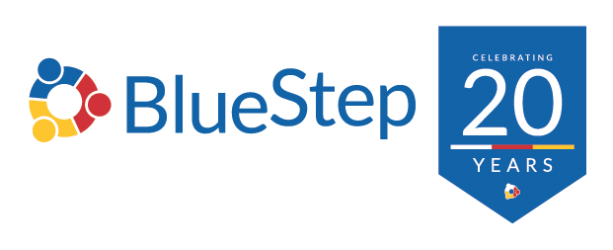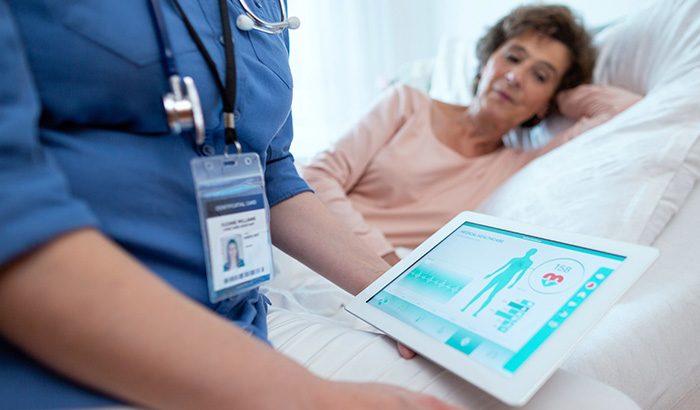Are you in the process of choosing a new software solution for your assisted living community? Making the right choice is crucial to ensuring your community has everything it needs to thrive.
This blog post will explore the six essential features that should be included in your new assisted living community software. We will cover everything from resident management and automated documentation to family and resident communication management, electronic health records, reporting and analytical capabilities, and regulatory compliance management.
Finding the perfect software for your assisted living community can be daunting. That’s why we are here to guide you through the process and help you make an informed decision that meets your unique needs.
So, without further ado, let’s dive into the six things you will need in your new assisted living community software. Let’s get started!
6 Things You’ll Need in Your New Assisted Living Community Software
- You’ll need resident management: Assisted living software allows administrators to efficiently handle their vast amount of resident data, including service costs, occupancy, etc.
With easy-to-view reports and data configured onto a single platform, the software simplifies the handling and processing of resident data. This makes things easier to find, improving the experience for staff.
Resident management also enhances the quality of care provided. This is because the software optimizes resource allocation and improves coordination and communication among the care team. As a result, residents receive timely and personalized care, leading to higher satisfaction levels and improved outcomes. - You’ll need automated documentation and record keeping: Automated documentation improves the accuracy and efficiency of record keeping. Manual documentation can be time-consuming and prone to human error, leading to medication errors, missed ADLs, and misinformation, all of which contribute to a resident’s quality of life.
An automated system ensures that critical information regarding residents, such as medication schedules, care plans, and medical history, are accurately recorded and easily accessible to the care team. This reduces the risk of errors and improves the quality and safety of care provided.
Another advantage of automated documentation is that it strengthens communication and coordination within the community. Centralizing documentation in a digital platform allows all care team members to access and update resident information in real time. - You’ll need family and resident communication management: Assisted living software that includes family resident communication management has benefits for families and residents. After all, no one wants to lose touch with their loved one once they move into an assisted living community.
Firstly, it helps to facilitate better communication between staff and families, allowing families to stay informed about any updates, changes, or health concerns of their loved ones.
The software can send regular updates to family members via text or email, provide photo and video updates, and even allow families to connect with their loved ones in assisted living communities through a secure portal.
Secondly, this software can help to streamline administrative processes. Families can access information like medical records, billing and payment information, and community communication through the portal, reducing the administrative burden on staff in assisted living communities.
This software can improve outcomes by making it easier for residents and families to communicate their needs and preferences to the staff, allowing staff to provide more personalized care. - You’ll need electronic health records: Electronic health records, or EHRs, provide real-time, secure access to accurate and up-to-date information about residents’ health. Staff members can access this information at any time, leading to better and more informed decision-making.
EHRs also increase staff efficiency by improving communication between staff members and reducing the amount of paperwork required. EHRs also make tracking and managing medications easy, reducing the risk of medication errors.
With EHRs, staff members can quickly access residents’ medical histories, including diagnoses, allergies, lab results, and medication lists. This makes it easier for staff to provide accurate and effective care that meets residents’ specific needs.
EHRs also provide staff members with alerts and reminders for upcoming appointments, immunizations, and other health-related events. This helps ensure that residents receive the care they need when they need it.
Additionally, your assisted living community software should provide tools to document and manage resident assessments and care plans in compliance with regulatory guidelines.
This includes capturing and storing resident information, performing assessments, creating individualized care plans, and updating them as needed. The software should also facilitate sharing this information with relevant staff members.
Assisted living software should have a robust incident reporting and tracking system to document and manage incidents within the community.
This includes reporting and tracking incidents related to resident safety, employee injuries, medication errors, or any other incidents required by regulations. The software should allow for capturing all necessary details, generating incident reports, and tracking the resolution process. - You’ll need reporting and analytical capabilities: Assisted living software with reporting and analytical capabilities can provide several benefits to assisted living communities, including generating reports, analyzing data to identify patterns, tracking changes made to residents’ care, and having a dashboard overview.
By generating reports, the software can help communities make better-informed decisions that improve the quality of care provided to residents and optimize community operations.
Analyzing data can help communities identify real-time patterns, trends, and potential problems. The staff members can then use this to make well-informed decisions quickly and efficiently.
An example of this could be tracking changes in medication administration or a resident’s vitals. Analyzing this data can provide insights into potential issues such as an increase in medication errors or whether a resident’s health is deteriorating. With real-time data, staff members can take corrective action before these issues become more significant problems.
Assisted living software can provide communities with a dashboard that provides a snapshot of the community’s performance metrics. This includes resident satisfaction, staff performance, and operational efficiencies. This data can help management understand if they are achieving their objectives and, if not, where changes can be made. - You’ll need regulatory compliance management: Assisted living software should have several key features to help with regulatory compliance management. These features ensure the community meets all regulatory requirements and can effectively manage and document compliance.
- You’ll Need Policy and Procedure Management: The software should provide a centralized system for managing the community’s policies and procedures. Having everything in one place is crucial to ensuring no information is missed. Information spread out across multiple sources can be a source of confusion and can lead to errors.
The centralized policy and procedure management system should include storing and organizing policies, making them easily accessible to staff members, and tracking revisions and updates to ensure compliance with regulatory changes. Any changes made should be documented so staff members know when the most recent changes were made. - You’ll Need Document Management: Assisted living software should have a document management system that allows communities to store and manage important compliance-related documents securely.
This is especially important since many documents contain sensitive information that only authorized individuals should have access to.
This can include licenses, certifications, training records, and resident-related documents. The system should also provide version control and an audit trail to track document revisions and access history. Seeing who accessed what document or when changes were made can prove to be especially useful later on. - You’ll Need Staff Training and Competency Tracking: The software should have the functionality to manage staff training and track their competencies.
This includes keeping track of required training modules, documenting staff completion of training courses, and ensuring that all staff members are properly trained and current on regulatory requirements. - You’ll Need State Survey Readiness: Assisted living software should assist communities in preparing for audits and surveys by providing easy access to all necessary compliance-related documentation, reports, and data.
This includes generating reports and analytics to demonstrate compliance and support regulatory inspections. Being able to generate those documents in a matter of minutes will cut down on stress levels.
- You’ll Need Policy and Procedure Management: The software should provide a centralized system for managing the community’s policies and procedures. Having everything in one place is crucial to ensuring no information is missed. Information spread out across multiple sources can be a source of confusion and can lead to errors.
Having these six things in your assisted living software will enable you to do more for your residents, reduce the risk of errors, and allow your assisted living community to run more smoothly for both staff and residents. These are things no assisted living community should go without!
BlueStep System Has Everything You Need for Your Assisted Living Software
Are you an assisted living community looking for a comprehensive software solution to streamline your processes and help things run smoothly? Look no further than BlueStep Systems!
Our software offers a wide range of features, including resident management, electronic health records, family and resident communication management, reporting and analytics, and much more.
Don’t miss out on the opportunity to enhance the efficiency and effectiveness of your assisted living community. Request a demo of BlueStep Systems today and see firsthand how our software can address your specific needs.
Schedule a quick inquiry if you have general questions, or reach out to us about our Senior Living EHR. Contact us now to schedule your demo, and discover if BlueStep Systems is the right fit for your community.


